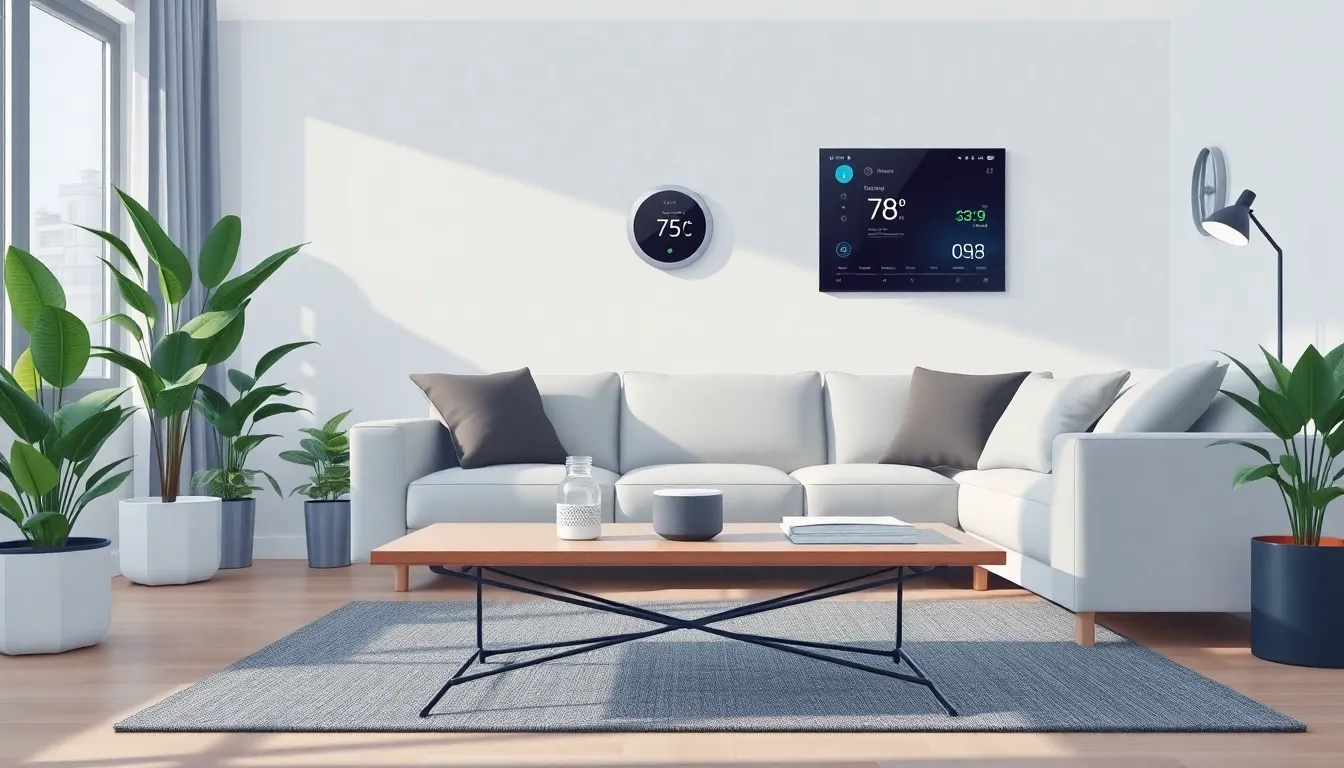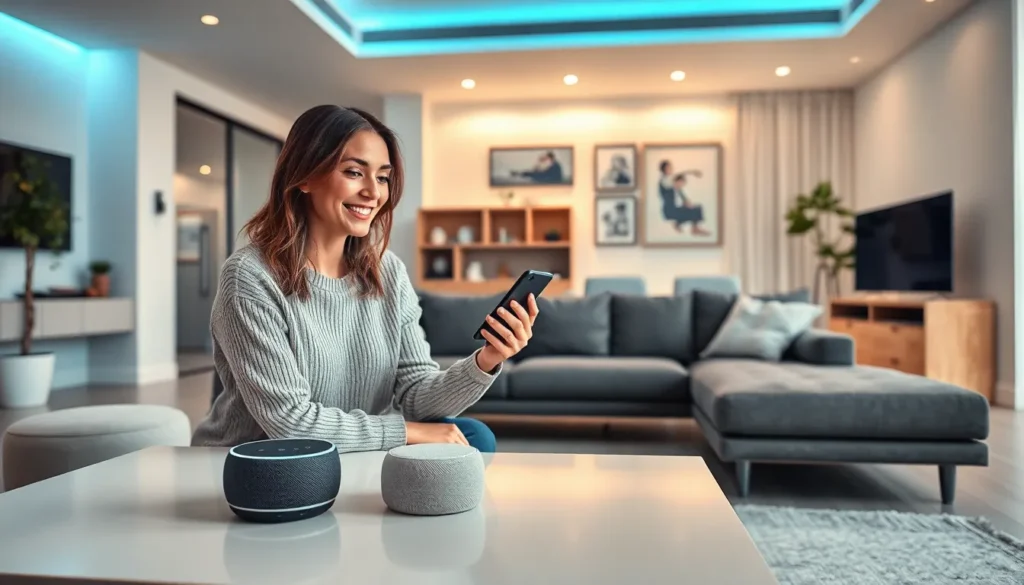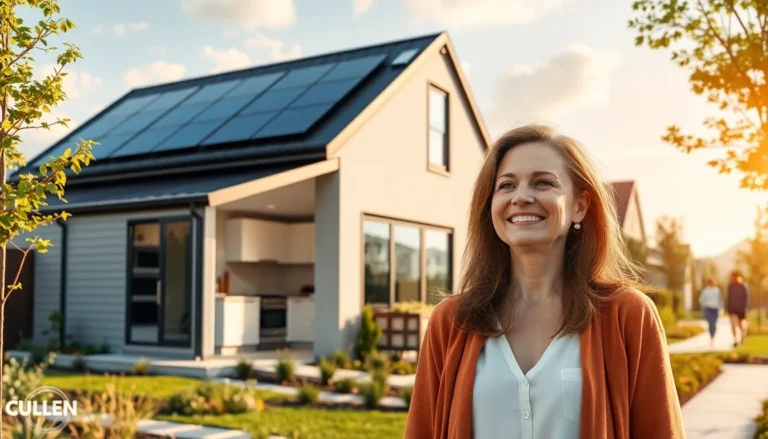In a world where the toaster can outsmart your average human, smart living brands are leading the charge in transforming everyday life into a high-tech adventure. Imagine a home that knows your coffee preference better than your best friend and can even remind you to water your plants—because let’s face it, the plants are judging you.
Table of Contents
ToggleWhat Is a Smart Living Brand?
A smart living brand focuses on enhancing everyday life through innovative technology. These brands integrate multiple connected devices, creating ecosystems that learn and adapt to user preferences. They provide solutions that improve comfort, convenience, and efficiency within the home.
Smart living brands often offer products like intelligent thermostats, smart lighting, and advanced security systems. These devices communicate with each other, allowing users to manage their homes remotely via smartphones or voice assistants. Features like automation and customization enable seamless interaction with daily routines.
Many brands also emphasize sustainability. Smart living solutions often conserve energy and reduce waste, aligning with eco-friendly practices. By prioritizing efficiency, brands can appeal to environmentally conscious consumers seeking modern technology.
Personalization plays a critical role in smart living brands. Devices can learn user habits, tailoring experiences based on individual needs. For instance, smart coffee makers prepare beverages according to preferred brewing times, enhancing morning routines.
Additionally, smart living brands span various categories including home entertainment, health monitoring, and cooking appliances. These categories create a comprehensive lifestyle approach. He or she can effortlessly transition between work, leisure, and self-care, all aided by intelligent technology.
Engagement through user-friendly interfaces makes these brands appealing. Whether through mobile apps or voice commands, users find it easy to operate devices. This accessibility fosters loyalty and encourages adoption of new technologies.
A smart living brand represents a transformative approach to daily life. Integration of technology enhances comfort and efficiency while addressing consumer needs.
Key Features of Smart Living Brands

Smart living brands prioritize innovation and sustainability, transforming daily routines through advanced technology and eco-friendly practices. These features appeal to modern consumers seeking efficiency and harmony in their lives.
Innovative Technology
Smart living brands leverage cutting-edge technology to create interconnected ecosystems. Devices seamlessly communicate with each other, learning user habits for a more personalized experience. Intelligent thermostats adjust temperatures based on occupancy patterns, enhancing comfort. Smart lighting systems allow for automated brightness changes throughout the day, optimizing energy usage. Home security systems incorporate real-time alerts and remote monitoring to ensure safety. Voice assistants provide easy control, making technology intuitive. These innovations come together to improve convenience while streamlining daily tasks.
Sustainable Practices
Sustainability stands at the forefront of smart living brands. Eco-friendly products reduce energy consumption through smart energy management features. Devices are designed to minimize waste, promoting recycling and sustainable materials. Features like energy-efficient appliances further benefit the environment while lowering utility bills. Many brands adopt transparent manufacturing processes, giving consumers insight into their impact. Smart living solutions resonate with environmentally conscious individuals, enhancing lifestyle while preserving resources.
Popular Smart Living Brands
Several brands stand out in the smart living sector. Each focuses on different aspects of technology, aiming to enhance lifestyle and environmental sustainability.
Brand A Overview
Brand A excels in creating smart home ecosystems that prioritize user comfort and convenience. This brand offers devices like intelligent thermostats that learn habits and adjust heating accordingly. Their smart lighting systems adapt to users’ schedules, optimizing energy usage. Energy conservation is a significant selling point, appealing to eco-conscious consumers. The user-friendly interfaces enhance accessibility for all ages. With ongoing updates and new features, Brand A remains at the forefront of innovation in the smart living market.
Brand B Overview
Brand B focuses on home security solutions designed to keep families safe and connected. Smart security cameras and alarms offer real-time monitoring through mobile apps. Users appreciate the ability to customize alerts and receive activity notifications. This brand places a strong emphasis on data privacy, ensuring user security is a top priority. Enhancements like facial recognition technology provide additional layers of protection. Brand B transforms home security into a seamless and user-friendly experience.
Brand C Overview
Brand C specializes in smart kitchen appliances that simplify cooking and meal preparation. Their products include smart ovens and coffee makers programmed to follow specific recipes or brewing preferences. Users can control appliances remotely, making cooking more efficient. The focus on sustainability is clear, as many devices utilize energy-efficient technologies. Brand C encourages creativity in the kitchen while promoting eco-friendly practices. The harmonious blend of technology and culinary convenience positions Brand C as a leader in smart living.
Benefits of Adopting a Smart Living Brand
Increased convenience is a primary benefit of smart living brands. Intelligent thermostats automatically adjust temperatures, ensuring optimal comfort. Smart lighting systems respond to individual preferences, creating the ideal ambiance at any moment.
Improved energy efficiency stands out as another significant advantage. Many smart devices actively monitor usage, providing insights that promote savings. These eco-friendly solutions often use less power, aligning with the sustainability goals many consumers prioritize.
Enhanced security features also contribute to the appeal of these brands. Advanced security systems include smart cameras and alarms, allowing real-time monitoring from mobile devices. Many users appreciate the added peace of mind that comes with these cutting-edge technologies.
Another benefit centers on personalization. Smart living devices learn user habits, tailoring experiences uniquely for each individual. For instance, some coffee makers prepare beverages based on preferred brewing times, making mornings more enjoyable.
Connectivity and interoperability between devices facilitate a cohesive lifestyle. Brands create seamless ecosystems where various gadgets communicate effectively, simplifying everyday tasks. This interoperability enhances user experience and strengthens brand loyalty.
Furthermore, user-friendly interfaces enhance accessibility. Most smart living brands prioritize design, ensuring that all age groups can engage effortlessly. Their commitment to innovation fosters excitement around adopting new technologies.
Overall, adopting a smart living brand transforms daily life. Through personalized automation and sustainable practices, these brands cater to evolving consumer needs while addressing environmental concerns.
Smart living brands are reshaping how individuals interact with their homes by merging technology with everyday tasks. Through innovative devices that prioritize user preferences and sustainability, these brands create environments that enhance comfort and convenience.
As consumers increasingly seek personalized experiences and eco-friendly solutions, smart living brands stand at the forefront of this transformation. The seamless integration of connected devices fosters a lifestyle that adapts to individual needs while promoting energy efficiency.
Embracing smart living not only elevates daily routines but also aligns with a growing commitment to environmental responsibility. As technology continues to evolve, these brands will play a crucial role in shaping the future of home living, making it smarter and more sustainable for everyone.




